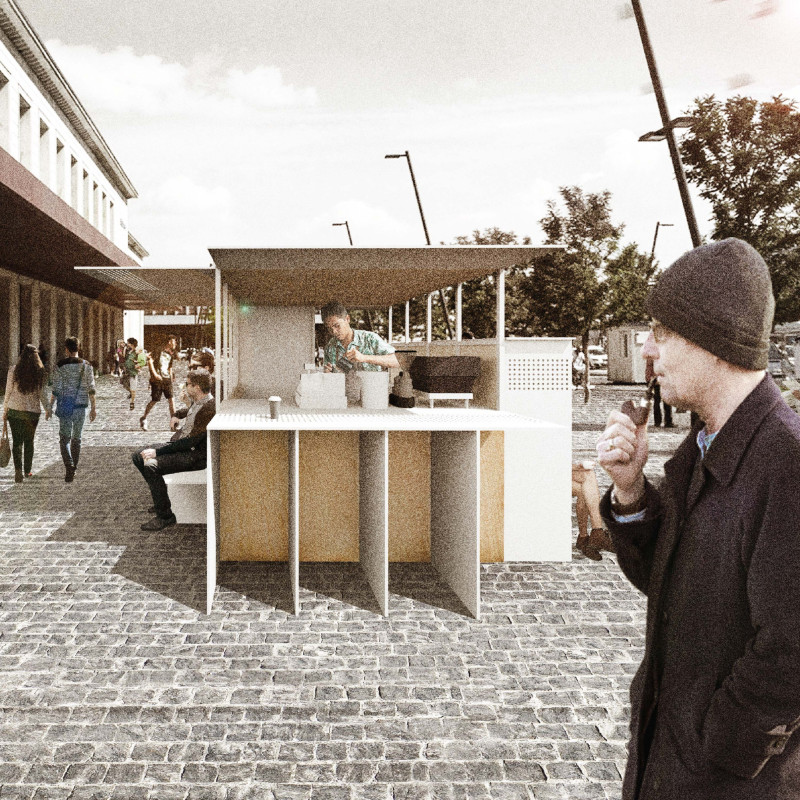5 key facts about this project
The Tiny Coffee House serves as an interactive piece of urban furniture designed to connect with its surroundings while offering essential amenities for urban residents. It prioritizes human scale and functionality, featuring a three-level layout that accommodates seating, a coffee bar, and individual charging booths. Positioned within a busy urban environment, it caters to both quick visitors and those looking for a place to relax.
Cube Form and Dynamic Access
The kiosk has a cube shape with four faces that allow for dynamic shutters, making it accessible from multiple directions. This design creates a sense of openness, letting people interact with the space as they move through it. The shutters can open and close, adapting to weather conditions and the flow of people, fostering both a welcoming atmosphere and functional shelter.
Lighting Strategy
Lighting is an important part of the design. At night, the retractable shutters expose LED lights that highlight the lines of the paneling. This feature not only enhances visibility but also provides a warm invitation to passersby in the evening, adding to the overall experience of the space.
Technological Integration and Sustainability
Individual charging booths offer both privacy and utility. These booths resemble confessional spaces, providing partitions that create a sense of separation. They can also unfold into benches with shaded canopies, addressing the need for charging electronic devices in social environments. The roof includes solar panels, which support energy efficiency by relying on renewable resources, highlighting a commitment to environmental awareness in urban settings.
Materiality and Structure
Birch plywood is a primary material used in the construction of the kiosk. It is lightweight yet durable, and its waterproofed nature ensures resilience against the elements. Aluminum components complement the overall design and maintain structural strength. Each material choice pieces together a cohesive look while enhancing practical performance.
The retractable shutters enhance interaction with users, allowing the structure to change its appearance and function throughout the day. The design encourages engagement with the urban environment, fostering a sense of community and usability.






















































